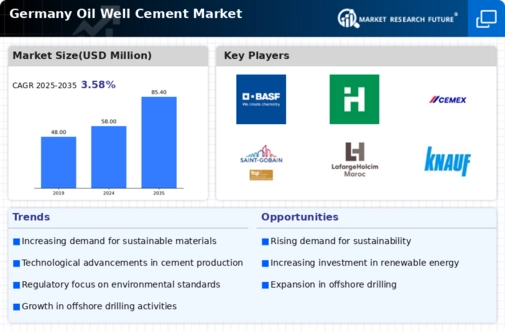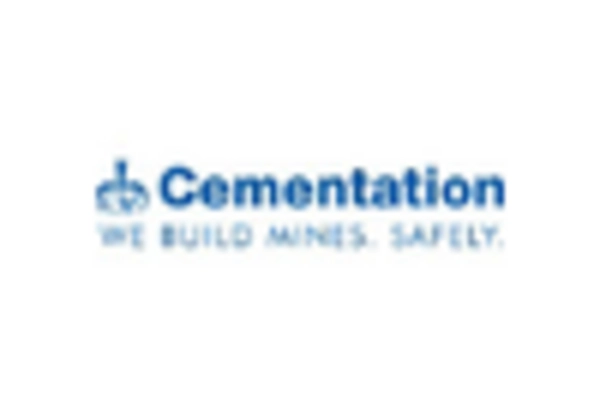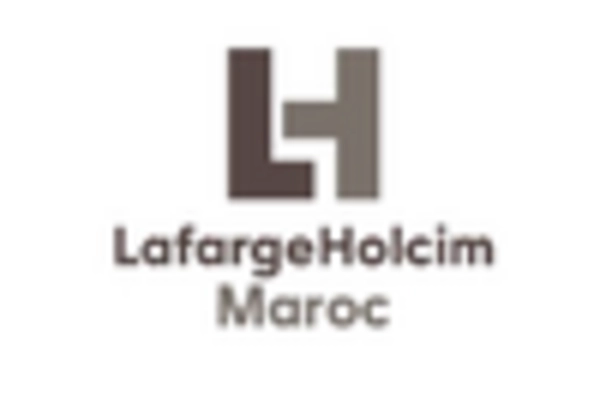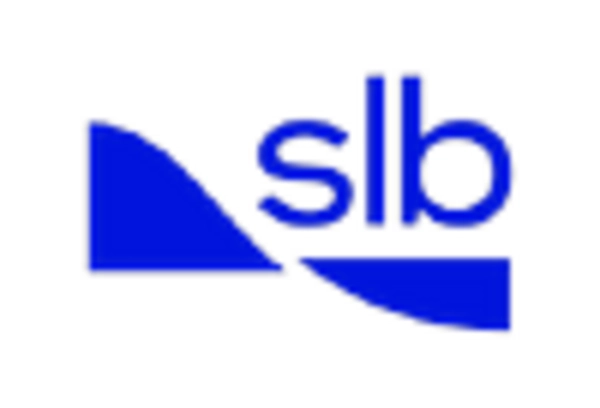Rising Demand for Energy
The oil well-cement market in Germany experiences a notable increase in demand driven by the country's energy requirements. As Germany continues to transition towards renewable energy sources, the need for oil and gas exploration remains significant. This demand is reflected in the growing number of drilling projects, which require high-quality cement for well integrity. In 2025, the oil well-cement market is projected to reach a value of approximately €200 million, indicating a robust growth trajectory. The increasing focus on energy security and the need to maintain existing oil and gas infrastructure further bolster the market. Consequently, the oil well-cement market is poised to benefit from this rising demand, as companies seek reliable solutions to ensure operational efficiency and safety.
Investment in Infrastructure
Germany's commitment to enhancing its energy infrastructure plays a crucial role in the oil well-cement market. The government has allocated substantial funds for the development and maintenance of oil and gas facilities, which directly impacts the demand for oil well-cement. In recent years, investments have surged, with an estimated €1 billion earmarked for infrastructure projects in the energy sector. This influx of capital is likely to stimulate the oil well-cement market, as construction and maintenance activities necessitate high-performance cement products. Furthermore, the emphasis on modernizing existing facilities to meet safety and environmental standards creates additional opportunities for growth. As a result, the oil well-cement market is expected to thrive amid these infrastructure advancements.
Growing Exploration Activities
The oil well-cement market in Germany is benefiting from an uptick in exploration activities, particularly in untapped regions. As energy companies seek to discover new oil and gas reserves, the need for reliable cement solutions becomes increasingly critical. Recent surveys indicate that exploration investments in Germany could reach €500 million by the end of 2025, highlighting the potential for growth in the oil well-cement market. This increase in exploration not only drives demand for cement but also necessitates the development of specialized products tailored to specific geological conditions. Consequently, the oil well-cement market is positioned to capitalize on these exploration activities, ensuring that companies have access to the necessary materials for successful drilling operations.
Environmental Regulations and Compliance
The oil well-cement market in Germany is significantly influenced by stringent environmental regulations aimed at minimizing the ecological impact of drilling activities. Regulatory bodies have implemented comprehensive guidelines that mandate the use of environmentally friendly cement products. This shift towards compliance has prompted manufacturers to innovate and develop sustainable cement solutions. In 2025, it is projected that the market for eco-friendly oil well-cement will account for over 25% of total sales, indicating a growing preference for sustainable practices within the industry. As companies strive to adhere to these regulations, the oil well-cement market is likely to experience a surge in demand for compliant products, fostering a more sustainable approach to oil and gas exploration.
Technological Innovations in Cement Production
The oil well-cement market in Germany is witnessing a transformation due to technological innovations in cement production. Advances in manufacturing processes and materials have led to the development of high-performance cements that offer enhanced durability and resistance to harsh conditions. These innovations are crucial for the oil and gas sector, where well integrity is paramount. In 2025, it is anticipated that the adoption of these advanced cement technologies will increase by approximately 30%, reflecting a shift towards more efficient and sustainable solutions. As companies seek to optimize their operations, the demand for innovative cement products is likely to rise, thereby propelling the growth of the oil well-cement market.

















Leave a Comment